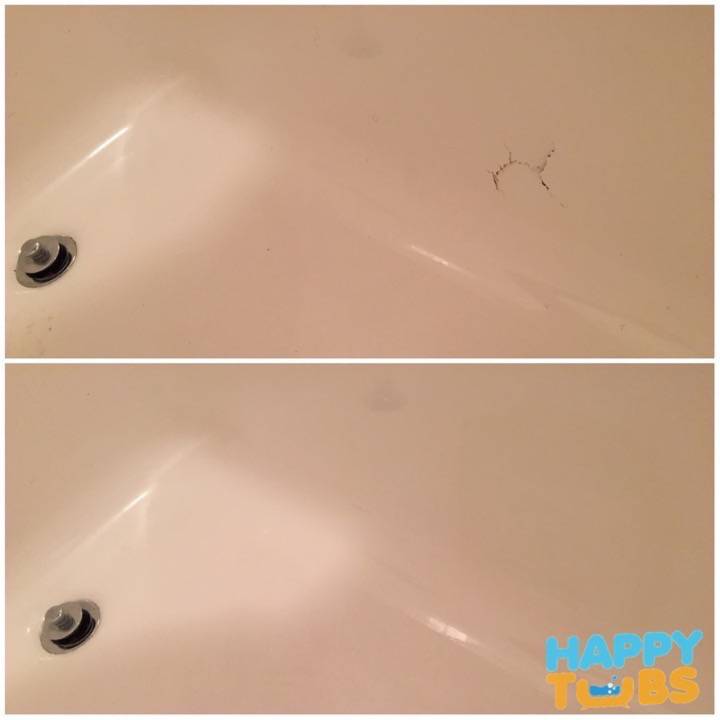Glass reinforced plastic (GRP), known as fiberglass or glass wool, is thin fibers of polymer (plastic) woven together with strands of glass. Fiberglass is used in innumerable consumer and industrial products from airplanes and automobiles to showers and insulation. When used in a finished product, fiberglass is mixed with a bonding material such as epoxy or thermoplastic, in order to shape it and strengthen it. There are some health hazards associated with handling GRP, especially when it's sold as glass wool.
- How To Repair A Crack In A Fiberglass Sink Faucet
- How To Repair A Crack In A Fiberglass Sink Drains
- How To Fix Cracked Fiberglass
- How To Repair A Cracked Fiberglass Sink
Always wear a face mask when working with GRP so as not to breathe in any glass particles. It's also advisable to wear gloves, so the glass strands don't cut your fingers [source: New York City].
- Damage to a fiberglass tub can be extra difficult to fix since cracks and chips can run deep. More importantly, fixing the damage isn’t a simple matter of painting over the blemish. Without sealing or binding the remaining surface together again, the harm will persist and moisture damage is likely to become worse later on.
- Devcon's Fiberglass, Porcelain and Plastic Repair Kit repairs small holes and cracks in bath and tub fixtures. The epoxy repair kit mixes to a white color, but the almond/bisque pigment can be added for color matching. Use to repair bathtubs, shower stalls, surrounds and sinks. For use on plastic, fiberglass.
- Deep or Shallow Crack Repair. Deep cracks go through the entire sink – these are the type that water will leak from. If the hand-sink is housed by a cabinet, open the doors so you can reach the underside of the sink. Put a piece of wax paper over the crack from the underside of the sink. Tape the wax paper firmly in place with masking tape.
Repairing a Fibreglass Crack doesn't have to be daunting. We've put together an easy to follow guide specifically aimed at those new to fibreglass! Devcon's Fiberglass, Porcelain and Plastic Repair Kit repairs small holes and cracks in bath and tub fixtures. The epoxy repair kit mixes to a white color, but the almond/bisque pigment can be added for color matching. Use to repair bathtubs, shower stalls, surrounds and sinks. For use on plastic, fiberglass and ceramics.

Advertisement
How To Repair A Crack In A Fiberglass Sink Faucet
Advertisement

Fiberglass is rather easy to repair. Here's how.
- Drill a tiny hole at each end of the crack. This will stop the crack from extending any further.
- Examine the crack. If it's a hairline crack, use an electric or hand held rotary blade to widen the crack just a bit. This will make it possible to fill the crack with epoxy resin.
- Wipe the crack with a dry rag to make sure it's clean and dry. If it's not clean and dry the epoxy won't adhere well.
- Fill the crack with a fair amount of fiberglass epoxy resin, using a plastic applicator. Make sure the crack is completely filled.
- Let the epoxy dry for a day. When the area is dry, smooth the surface with sandpaper.
How To Repair A Crack In A Fiberglass Sink Drains
You may want to apply colored gel-coat enamel over the repaired area, so the repair won't be so noticeable. You may be able to obtain a small amount from an auto body shop.
How To Fix Cracked Fiberglass
[source: Plastic Genius]
How To Repair A Cracked Fiberglass Sink
Advertisement